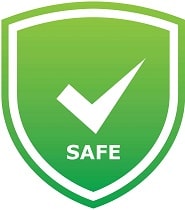Is (Gadolinium-Based RMI Contrast Agents) Safe in Breastfeeding
Question
I am a breastfeeding mother and i want to know if it is safe to use (Gadolinium-Based RMI Contrast Agents)? Is (Gadolinium-Based RMI Contrast Agents) safe for nursing mother and child? Does (Gadolinium-Based RMI Contrast Agents) extracts into breast milk? Does (Gadolinium-Based RMI Contrast Agents) has any long term or short term side effects on infants? Can (Gadolinium-Based RMI Contrast Agents) influence milk supply or can (Gadolinium-Based RMI Contrast Agents) decrease milk supply in lactating mothers?
(Gadolinium-Based RMI Contrast Agents) lactation summary

- DrLact safety Score for (Gadolinium-Based RMI Contrast Agents) is 1 out of 8 which is considered Safe as per our analyses.
- A safety Score of 1 indicates that usage of (Gadolinium-Based RMI Contrast Agents) is mostly safe during lactation for breastfed baby.
- Our study of different scientific research also indicates that (Gadolinium-Based RMI Contrast Agents) does not cause any serious side effects in breastfeeding mothers.
- Most of scientific studies and research papers declaring usage of (Gadolinium-Based RMI Contrast Agents) safe in breastfeeding are based on normal dosage and may not hold true for higher dosage.
- Score calculated using the DrLact safety Version 1.2 model, this score ranges from 0 to 8 and measures overall safety of drug in lactation. Scores are primarily calculated using publicly available case studies, research papers, other scientific journals and publically available data.
Answer by Dr. Ru: About (Gadolinium-Based RMI Contrast Agents) usage in lactation
The various contrast media that are gadolinium derivatives and used for explorations with Magnetic Resonance Imaging (MRI) are considered compatible with breastfeeding because they are quickly eliminated (elimination half-life of less than 2 hours). They undergo very little metabolic changes and are virtually non-absorbable orally. They are structurally very similar to each other. Some have been shown to have no or minimal excretion into the milk. Less than 0.04% of the dose given to the mother ends just going into the milk.Due to its low oral bioavailability, intestinal absorption should be less than 1% of the dose took by the infant.The maximum dose received by the infant is considered less than 0.0004% of the maternal dose, which is much less than the dose administered to a newborn infant who undergoes a MRI scan. Most Radiology Scientific Societies agree that after an MRI scan is not necessary to temporarily stop breastfeeding. Some authors recommend avoiding the use on lactating women of some Gadolinium contrast media that would pose a high risk for developing Systemic Nephrogenic Fibrosis, especially in the neonatal period, like gadoversetamide, and gadodiamide dimeglumine, by using instead low-risk ones like gadoterate, gadoteridol and gadobutrol. See below the information of this related group:
Alternate Drugs for Magnetic Resonance Imaging Contrast Media. ATC V08C
Gadoversetamide(Safe)
Gadodiamide(Safe)
Gadoteridol(Safe)
Gadobutrol(Safe)
Gadofosveset(Low Risk)
Meglumine Gadopentetate(Safe)
Gadoteric Acid(Safe)
Meglumine Gadobenate(Safe)
Sodium Gadoxetate(Safe)
Gadofosveset Trisodium(Low Risk)
